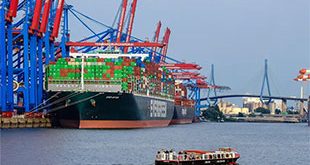
By Alan Berube
Trade efforts worldwide are recognising that cities, not countries, are the real centers of global trade
Recently, a group of officials gathered to plot a new trade strategy. It was a typical trade-policy discussion: the participants diagnosed competitive export sectors, identified key trading partners, described how public and private investment could resolve barriers to global integration, and forged a new bilateral relationship.
But the meeting was not hosted by the World Bank or the World Trade OrganiSation in Washington, DC. It was held in Portland, Oregon, where Mayor Sam Adams and Greater Portland, Inc. (a public-private partnership dedicated to driving regional economic growth and job creation) have collaborated to develop and implement a new export plan for the Portland metropolitan area.
In the age of the WTO, free-trade agreements, and currency wars, why would a city have a trade strategy? The answer is simple: as Portland’s initiative – one of a growing number of metropolitan-led trade efforts worldwide – recognises, cities, not countries, are the real centers of global trade.

More than 2,000 years ago, before the emergence of the nation-state, the Silk Road connected Xi’an, Baghdad, Istanbul, and hundreds of other cities through trade. In the Middle Ages, Zanzibar and other East African cities served as trading hubs for Asian merchants. And the Hanseatic League, a confederation of market towns, facilitated trade between coastal European cities between the thirteenth and seventeenth centuries.
Cities unite people who seek common space to exchange goods, services, and information. In the mid-eighteenth century, Adam Smith observed that in his native Scotland’s sparsely populated Highlands, “every farmer must be butcher, baker, and brewer for his own family.” But cities, he noted, permit the division and specialisation of labor, allowing people to trade what they do not consume.
Likewise, in the nineteenth century, the English economist Alfred Marshall described how cities are really “agglomeration economies” that gather the infrastructure, workers, and information needed to promote innovation and trade. And, in 2008, Paul Krugman received the Nobel Prize for his work explaining how, amid increasing capital and labour mobility, metropolitan areas remain crucial nodes for trade.
In short, cities make trade possible. But the United States and other advanced economies have traditionally neglected this when designing trade policies, consistently favoring blunt instruments like tax and monetary policy over “bottom-up” approaches that support the distinct comparative advantages of cities and regions in global markets. By contrast, China considers city-building a crucial aspect of its export policy.
Furthermore, local policymakers often forget that trade increases city residents’ prosperity by bringing in new wealth, in turn contributing to job creation and bolstering demand for services in the local economy. In recent decades, too many American cities have relied on vanity projects – such as stadiums, casinos, convention centers, and shopping malls – to stimulate economic growth. But, while such projects may attract limited out-of-town revenue, they are more likely to recirculate local money. At the same time, they fail to capitalise on rising demand in global markets – for which the growth of emerging-market cities is largely responsible.
According to the Brookings Institution’s recent Global MetroMonitor report, the 300 largest cities and metropolitan economies worldwide contain only 19% of the world’s population, but account for 48% of global GDP and 51% of recent GDP growth. Developing-country cities accounted for 24% of global growth in 2012, up from 20% in 2007. Given that most of the world’s population now lives in urban areas, cities’ potential as engines of the global economy is greater than ever.
The evolving idea of the “global city,” coined two decades ago by the sociologist Saskia Sassen, further demonstrates the city’s crucial position in global trade. Although the moniker initially referred to just three financial centers worldwide – New York, London, and Tokyo – Sassen now identifies 75 cities – including newer hubs, such as São Paulo, Buenos Aires, Seoul, and Taipei – as global cities.
But finance alone does not make a city “global.” Centers of manufacturing (Detroit, Stuttgart), academia (Boston, Nanjing), maritime activities (Antwerp, Singapore), and media (Madrid, Sydney) all participate in influential global circuits, defined by what they trade.
This does not mean that countries do not play a crucial role in enabling global trade. Cities lack the geographic scale, political and fiscal capacity, and legal standing to influence broader policy debates or to capitalize on all available trade opportunities. Portland forged a new relationship with a “clean tech” firm in São Paulo, but it could not negotiate a free-trade agreement with the city or with Brazil.
Just as trade should be at the forefront of cities’ economic policies, cities should be at the forefront of national trade strategies. Countries should support cities that are investing, organizing, and forging linkages with other cities to improve their competitive position.
In San Antonio, Texas, local leaders transformed a former military base into a world-class inland port, creating a corridor through which more than half of US-Mexico trade flows. In Rio de Janeiro, a new public-private partnership is overcoming long-strained relationships with state agencies in order to attract inward investment. And the Bay Area Council and City of San Francisco have capitalized on the region’s longstanding ties to China to promote economic development in the Bay Area, Beijing, Hangzhou, and Shanghai.
Global trade is not pleasant; it is fiercely competitive, and policymakers must address the short-term costs that it routinely imposes on people and places. But global trade also provides a route to long-term prosperity – one that runs squarely through cities. Two millennia after the opening of the Silk Road, a global network of trading cities is beginning to reemerge. Local and national trade policy should aim to advance this process.
Alan Berube, a senior fellow and deputy director of the Brookings Institution’s Metropolitan Policy Program, is the co-author, with Joseph Parilla, of MetroTrade: Cities Return to their Roots in the Global Economy.
 The Independent Uganda: You get the Truth we Pay the Price
The Independent Uganda: You get the Truth we Pay the Price





